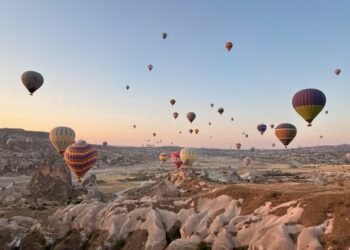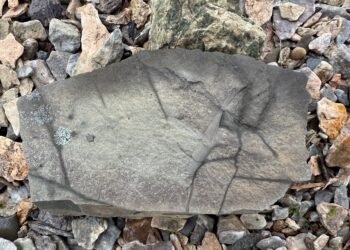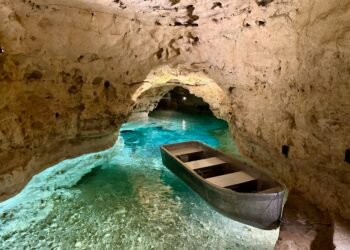Join me as I journey through the haunting and captivating ruins of Pompeii, an ancient Roman city frozen in time by the eruption of Mount Vesuvius. In this article, I combine my firsthand experiences with the science and history behind this UNESCO World Heritage site, revealing the preserved streets, mosaics, and artifacts that survived beneath layers of volcanic ash. From Roman engineering marvels to modern conservation efforts, explore with me how Pompeii offers a remarkable window into the past, showing both the resilience of its people and the sheer power of nature.
1 Introduction: Setting Foot in Naples and Preparing for Pompeii
Naples greeted me with its vibrant streets, timeless architecture, and, of course, the promise of authentic pizza that lived up to its legendary status. As I roamed this ancient city, taking in its warm colors and character, a thought lingered in the back of my mind: just a short journey from here lay one of history’s most famous archaeological sites—Pompeii, a city both preserved and haunted by a volcanic catastrophe.
In early May, the weather in Naples was pleasantly mild, with cool evenings that contrasted with sun-drenched days that warmed to around 22°C. This made it the perfect time to explore. I’d planned a week in the region, starting in Naples before heading to the coastline of Sorrento. But my visit to Pompeii would be the focal point of the trip, and I was eager to see the ancient ruins frozen in time beneath the looming shadow of Mount Vesuvius.
2 First Glimpses of Pompeii: A Tranquil Landscape with a Violent Past
The day finally arrived for my full-day tour, which would take me to Pompeii, Mount Vesuvius, and Herculaneum. Our journey from the Naples waterfront was a short drive, just under an hour. As we approached, Pompeii came into view, and its tranquility was striking. This sprawling site, officially designated the Archaeological Park of Pompeii, was a contrast to its tragic past—a city once bustling with life, now serenely blanketed by flowers and marked by the excavated remains of ancient buildings.

Stepping onto the cobblestone streets, the city layout revealed a level of order and structure that felt distinctly modern. Streets stretched out in a structured grid, evidence of advanced urban planning from two millennia ago. As I walked along these pathways, my gaze naturally followed one particular street that aligned directly with Mount Vesuvius. The volcano loomed in the distance, its silhouette a reminder of the city’s destruction and the geological forces that created it.
3 Volcanology and Mount Vesuvius’s Eruption Mechanics
As I wandered Pompeii’s ancient streets, my eyes kept drifting to Mount Vesuvius, its quiet form a reminder of the power it unleashed nearly two thousand years ago. In 79 AD, this volcano transformed from a familiar landmark to a harbinger of catastrophe, releasing pyroclastic flows that obliterated everything in their path. It’s strange to think that, for Pompeii’s residents, Vesuvius was just a mountain, a constant on the horizon of daily life.
Mount Vesuvius sits at a tectonic junction, where the African plate is slowly subducting beneath the Eurasian plate. This collision creates a line of volcanic activity along the coast of Italy, making the region fertile but volatile. Scientists describe the Vesuvius eruption as “Plinian,” characterized by explosive outbursts of volcanic gas and ash, named after Pliny the Younger, who recorded the eruption from across the Bay of Naples. His account gives us one of history’s earliest eyewitness descriptions of a volcanic event, vividly detailing “a pine tree of smoke” rising into the sky—a harrowing symbol of the deadly plume that would descend on Pompeii.
Walking through Pompeii, I could imagine how helpless its residents must have felt as pyroclastic flows, scorching clouds of ash and gas, swept over the city at speeds of over 100 kilometers per hour. These flows buried the city under a thick layer of ash, preserving everything in their path but leaving no time for escape. Scientists have studied these layers, revealing distinct phases of the eruption, each marked by different types of volcanic debris—from the heavier pumice stones that fell early on to the finer ash that blanketed Pompeii in the final stages. The tragedy unfolded over two harrowing days, freezing the city and its people in a state of suspended animation.
As I stood on those same streets, it was almost impossible to fathom the scale of destruction, yet here I was, able to walk freely through a place that felt preserved yet ghostly. The air was calm, but I could feel the weight of the past all around.
4 First Impressions and Walking Through Pompeii’s Streets
Stepping deeper into Pompeii was like walking back in time, surrounded by the quiet streets and vivid reminders of a life suddenly interrupted. The meticulous layout of the city was immediately apparent. Streets stretched out in a neat grid, a feature that seemed remarkably modern for a city over two thousand years old. It felt as though I was exploring an early blueprint for urban planning, an architectural relic that still hinted at the rhythm of daily life in ancient Rome.

The cobblestone streets showed signs of the lives once lived here. Deep grooves marked the paths where wooden cartwheels once rolled, carrying goods to markets and homes across the city. It was easy to imagine the bustling energy that must have filled these streets—the sounds of voices, the creak of carts, the shouts of merchants calling out their wares. Along one street that ran northward, I caught a clear view of Mount Vesuvius, standing ominously in the distance. The volcano’s presence felt almost surreal—a quiet backdrop that would have once loomed large in Pompeii’s daily life but now symbolized its final, violent chapter.
“Walking through Pompeii’s silent streets, I felt the weight of history and humanity converge—a city frozen in time, yet echoing with the lives of those who once thrived here.”
As I explored further, it struck me how advanced the infrastructure was for the time. Pompeii had systems for water drainage and even designated areas for public gatherings. It was fascinating to see the familiar structure of a community that functioned much like our own cities today. The layout was strategic, with wider streets for movement and narrower alleys leading to homes and smaller buildings, designed for optimal flow and organization.
This organization extended beyond the streets to the buildings themselves. Some houses and public spaces featured intricate tile mosaics on their floors, remnants of Roman artistry that had somehow survived centuries under layers of volcanic ash. The details in the tiles and mosaics were striking, with scenes from mythology and daily life captured in colorful patterns. It was a glimpse into the personalities and values of a people who sought beauty even in the functional spaces of their lives.
Standing there, surrounded by these artistic remnants, I felt the weight of history and humanity converge in a powerful way. This was not just a set of ruins; it was a place where real people lived, worked, and dreamed—only to have it all preserved by an unexpected geological force.
5 Encountering Art, Architecture, and Roman Engineering
As I wandered deeper into Pompeii, the artistry woven into the city’s buildings became even more pronounced. Intricate tile mosaics decorated floors, while statues and sculptures adorned public squares and private homes, each telling a story of the people who once thrived here. Despite the tragedy that befell this city, it was clear that its inhabitants had an appreciation for beauty, culture, and craftsmanship that matched their engineering prowess.

One of the most striking details was the materials the Romans chose. Buildings were crafted from volcanic rock, marble, and brick, materials that not only offered durability but also reflected the natural landscape around them. The volcanic rock, sourced from previous eruptions of Mount Vesuvius, became both a literal and symbolic part of Pompeii’s architecture, resilient yet vulnerable. The marble statues, somehow spared by the destructive flows of volcanic ash, stood as enduring reminders of Rome’s artistic legacy, representing gods, mythical heroes, and notable figures from their society.
The Romans were renowned for their engineering abilities, and Pompeii was no exception. The city was filled with innovations that might seem surprisingly modern. I came across a small amphitheater, a testament to Roman engineering and the communal spirit that defined their society. This coliseum-like structure was designed to host public spectacles, providing an outlet for social gathering and entertainment, much like the theaters we know today.

Roman homes, too, had a distinctive layout, designed to maximize both privacy and communal living. Wealthier homes featured atriums—open courtyards surrounded by columns, with basins to collect rainwater. Even in these smaller details, the ingenuity of Roman life was evident. In an age before complex plumbing systems, they had devised ways to capture and store water efficiently, allowing families to gather around these courtyards, the heart of the Roman home.
Perhaps what impressed me most was the resilience of the mosaics and paintings, vibrant despite the passage of time. In some of the wealthier homes, the walls were decorated with frescoes that depicted scenes of Roman life, religious ceremonies, and mythological tales. These artworks gave me a glimpse into the world of Pompeii’s residents—their beliefs, their daily routines, and the timeless pursuit of beauty and meaning. The craftsmanship of these frescoes and mosaics was astounding, with colors that remained vivid, preserved beneath the ash for centuries until they were unearthed by archaeologists.
6 Archaeology and the Preservation of Organic Material
One of the most powerful moments of my visit was stepping into the museum that houses the plaster casts of Pompeii’s residents, frozen in their final moments. These casts are hauntingly lifelike, showing the precise postures in which people fell, overcome by the heat and ash that engulfed the city. Seeing these preserved forms up close was a solemn reminder of the tragedy that struck Pompeii and a testament to the power of nature—and to the science that allows us to look back at such a vivid past.

The preservation of Pompeii is a remarkable geological and archaeological phenomenon. When Mount Vesuvius erupted, it unleashed a pyroclastic surge that enveloped the city in volcanic ash, depriving it of oxygen. This unique combination of extreme heat and lack of oxygen prevented the usual decay processes, preserving even delicate organic materials. Household items, food, and even wooden furniture were encased in ash, creating a time capsule of Roman life that survived for nearly two millennia.
Archaeologists have taken full advantage of this natural preservation. In the 19th century, the renowned Italian archaeologist Giuseppe Fiorelli developed a method that brought Pompeii’s history to life in an entirely new way. He realized that voids left in the ash layer were formed by decomposed bodies. By carefully filling these voids with plaster, Fiorelli was able to create casts of the people who perished in the eruption, preserving their forms in extraordinary detail. These plaster casts reveal hauntingly human details, from facial expressions to the folds in their clothing—details that give us an almost surreal connection to the past.
Artifacts recovered from Pompeii range from simple pottery to intricate jewelry, each piece offering clues to the social and economic fabric of Roman society. Even mundane items like cooking pots, storage jars, and food remnants tell the story of daily life in Pompeii, shedding light on the diet, domestic routines, and trade networks that sustained the city. Some of these items were stored in the very places where they were left in 79 AD, giving a sense of immediacy and realism that few other archaeological sites can offer.

In one part of the museum, I found myself staring at the skeleton of a dog, preserved mid-motion, as if caught in an eternal leap. It was a sobering sight, underscoring the breadth of Pompeii’s sudden destruction—not just the human loss, but the animals and plant life that also bore witness to the fury of Vesuvius. The preservation of organic material at Pompeii has given scientists insight into the city’s agricultural practices as well. By studying ancient seeds and pollen grains recovered from the site, researchers have pieced together a picture of the crops cultivated here, including grains, olives, and grapes. The region’s soil, enriched by layers of volcanic ash, proved ideal for agriculture, making Pompeii and its surroundings incredibly fertile.
This volcanic soil continues to support lush vineyards and farmland today, feeding a vibrant agricultural economy that’s been sustained for centuries. One famous product of the area is the wine Lacryma Christi, or “Tears of Christ,” made from grapes grown on the slopes of Mount Vesuvius. Local legend has it that the tears of Christ fell on the slopes of Vesuvius, enriching the soil and bestowing it with exceptional fertility. Enjoying a sip of Lacryma Christi today connects visitors to Pompeii’s agricultural legacy and the enduring spirit of renewal that characterizes life in this volcanic land.
7 Modern Conservation Efforts and Environmental Impact
Walking through the remains of Pompeii, I couldn’t help but reflect on the incredible effort it takes to preserve this fragile city today. Though Pompeii was initially shielded by volcanic ash, its exposure since excavation has posed new risks. The elements—wind, rain, and even seismic activity—now pose a significant threat to the ancient structures, which have weathered two thousand years of natural forces.
Preserving Pompeii has become an ongoing scientific endeavor, with archaeologists, conservators, and environmental scientists working tirelessly to safeguard it for future generations. Efforts are now in place to protect mosaics, frescoes, and structural remnants from weathering and decay, with climate-controlled coverings and careful restorations designed to limit exposure to the elements. The city’s ancient frescoes, for example, face unique challenges as the pigments are vulnerable to humidity and temperature fluctuations. To counteract this, conservators employ specialized techniques to stabilize the colors and maintain the intricate details left by Roman artisans.
Tourism, too, presents both a benefit and a challenge. While visitors bring valuable revenue that supports preservation efforts, the foot traffic also wears down pathways and delicate structures. Recognizing this, Pompeii’s management has implemented controlled access areas, protecting more vulnerable parts of the site while still allowing visitors to experience its grandeur. Advanced technologies like laser scanning and 3D modeling have become invaluable tools in monitoring the site’s structural integrity. These digital records allow scientists to track changes over time, detecting early signs of damage or deterioration before they become significant issues.
But perhaps the greatest threat today is one that Pompeii shares with historical sites around the world: climate change. Rising temperatures and increased precipitation have the potential to accelerate the decay of structures and artwork, leading to rapid degradation if left unchecked. Preservation efforts are adapting to this reality, with researchers conducting studies on the effects of climate-related factors and developing strategies to mitigate these impacts. It’s a race against time, and the urgency is palpable in the measures being taken to protect what remains of this remarkable city.
As I walked away from Pompeii, I felt a profound sense of connection to both its past and its future. The site stands as a testament to human resilience, ingenuity, and the scientific strides that allow us to study and protect our shared history. Standing among the ruins, with Mount Vesuvius casting its quiet shadow, I felt a deeper appreciation for the power of nature and the relentless spirit of discovery that drives us to preserve these places. Pompeii is more than just an archaeological site; it’s a bridge to an ancient world, a lesson in human vulnerability and resilience, and a powerful reminder of the importance of protecting our cultural heritage.

8 Practical Travel Tips for Visiting Pompeii
If you’re planning a visit to Pompeii, preparation can make all the difference in ensuring a rewarding experience. Here are some essential travel tips:
- Getting There: Pompeii is easily accessible by train from Naples, with direct lines running frequently from Napoli Centrale to Pompeii Scavi. It’s also a popular day trip destination from Sorrento.
- Best Time to Visit: May and September are ideal months for visiting Pompeii, offering mild temperatures and fewer crowds than the peak summer months. Early morning or late afternoon visits are best for avoiding midday heat and crowded pathways.
- Footwear and Gear: Pompeii’s ancient cobblestone streets and uneven surfaces require comfortable, sturdy walking shoes. A hat, sunscreen, and plenty of water are essential, especially if you’re exploring on a sunny day.
- Duration: Plan for at least half a day to explore the main highlights. However, a full day allows for a deeper dive into lesser-known areas of the site, which offer unique perspectives away from the crowds.
- Guided Tours and Maps: While Pompeii can be explored independently, a guided tour or an audio guide is highly recommended for a richer understanding of the history, architecture, and significance of each area. Maps are available at the entrance and offer useful information on the site layout.
- Nearby Attractions: Consider pairing your visit to Pompeii with nearby sites like Mount Vesuvius or Herculaneum for a fuller experience of the region’s volcanic and archaeological history.
9 Pro Tips for Science Travelers
For those who enjoy delving deeper into the scientific aspects of a destination, here are some ways to elevate your Pompeii experience:
- Bring a Geology Guide: Understanding the volcanic forces that shaped Pompeii and the Naples region adds another layer of appreciation to the experience. Guides on geology or volcanoes are invaluable for identifying rock types and volcanic features throughout the site.
- Visit the Antiquarium: Don’t miss the on-site museum, the Antiquarium of Pompeii. This museum houses artifacts and exhibits detailing Pompeii’s history, the science behind its preservation, and the latest archaeological discoveries. Look for the exhibits on organic materials, which provide fascinating insights into ancient Roman agriculture and food.
- Photography Tips for Mosaics and Frescoes: For a close-up view of the mosaics, bring a camera with a macro lens if possible. Capturing the intricate details of the artwork enhances your appreciation of the craftsmanship, and it’s a rewarding way to document the artistic elements preserved by volcanic ash.
- Sample Local Wine with Geological Awareness: The local Lacryma Christi wine carries a deep connection to the volcanic soil surrounding Vesuvius. Visiting a nearby vineyard, if time permits, can reveal more about how volcanic soil affects grape cultivation, allowing you to taste the geological history of the region.
- Engage with Conservation Efforts: Look for guided tours or information sessions that discuss current conservation projects at Pompeii. Some guides and exhibits provide insights into the scientific techniques used in preserving the site, from climate control strategies for mosaics to structural reinforcements, which are fascinating for those interested in archaeology and preservation science.
- Use an Augmented Reality (AR) App: Several AR apps are available that allow you to visualize how Pompeii’s buildings and spaces would have looked before the eruption. Download one before your visit to see real-time overlays of reconstructed buildings and daily Roman life as you walk through the ruins, adding a “then-and-now” perspective to your experience.
- Look for Signs of Ancient Engineering: Take note of ancient Roman engineering features like aqueduct channels, drainage systems, and road grooves from cart wheels. These practical details speak to the Romans’ advanced knowledge in urban infrastructure and are an inspiring reminder of early civil engineering.
- Consider Evening Lectures or Events: Some local organizations and archaeological groups host evening lectures or events around Pompeii, where you can hear from historians, volcanologists, or archaeologists working in the area. If time permits, these talks offer rich context and the latest scientific findings.










